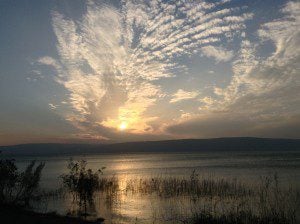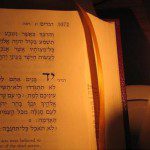
It’s been a few weeks since my last post. First came General Conference; the next weekend, I was in Utah presenting at a conference, followed by a family reunion. My parents were in Salt Lake City for mission training before heading to Ghana, and all the maternal siblings came. Last weekend, well, the end of the semester is nigh and it’s always a little apocalyptic and high-pressure.
We often assert that the Book of Mormon is historical, and rightly so, in my view. But even so, it was certainly not written as modern history.
History to most modern Westerners is what happened in the past, and as a genre of literature it is an account of what happened in the past. We judge written history by how accurately and objectively it recounts past events. In other words, we tend to apply to history the same standards that we apply to journalism….We assume that ancient historians, and the biblical writers in particular, had the same definition of history. This assumption has been and continues to be the source of problems.”- Stephen L. McKenzie, How to Read the Bible: History, Prophecy, Literature- Why Modern Readers Need to Know the Difference, and What it Means for Today (Oxford, 2005) (This book, btw, is the one that talks about using Galaxy Quest to talk about genre and genre confusion, something I have enthusiastically adopted.)
Ancient writers, even when working in a historical genre, had very different goals and standards.
When we come to these chapters, the data should really make use sit up and pay attention. Look at the time references-
Enos 1:25, 179 years have passed since Lehi left Jerusalem.
Jarom 1:5, 200 years.
Jarom 1:13, 238 years
Omni 1:3, 276 years, 282 years, in the same verse!
Omni 1:5, 320 years
Can you imagine writing a “History of the US” and skipping from 1730 until today? It’s unthinkable. What kind of history is this, then? The general answer, again is, not the kind modern readers expect. Modern, western, post-enlightenment expectations and lenses often twist our understanding of scripture.
Do the Book of Mormon writers all write with the same intent and goal? Do they all think they are doing the same thing? Jarom 1:1 says that Jarom is writing for “the benefit of our brethren the Lamanites” whereas Nephi was writing to benefit his people. (And of course, modern readers tend to think that all scripture was written explicitly with us today in mind of the scriptural authors.) Jarom 1:2 and Omni 1:1 talk about writing on the plates “to preserve their geneology,” which sounds quite different from what Nephi and Jacob thought they were doing.
John Sorenson has suggested that the Book of Mormon is a lineage history, one mostly concerned with Lehi and his descendants. That makes it a narrow kind of history, one not intending to cover every detail, event, or people they encounter. It’s a highly selective history.
Enos 1:20 contains a very negative description of the Lamanites.
their hatred was fixed, and they were led by their evil nature that they became wild, and ferocious, and a blood-thirsty people, full of idolatry and filthiness; feeding upon beasts of prey; dwelling in tents, and wandering about in the wilderness with a short skin girdle about their loins and their heads shaven; and their skill was in the bow, and in the cimeter, and the ax. And many of them did eat nothing save it was raw meat; and they were continually seeking to destroy us.
We probably shouldn’t read this as an objective, purely factual description. People rarely describe their antagonists or opponents in terms that their opponents would consider fair and accurate, whether that’s the 2016 political race, the ancient Near East, or the Book of Mormon.
The scripture is clear that the Nephites were prejudiced against the Lamanites (Jacob 3:5; Mosiah 9:1-2; Alma 26:23-25 ). That must have influenced how they perceived their enemies. The Nephite description of the Lamanites falls into a pattern known in the Near East. The Sumerian city dwellers in Mesopotamia of the third millennium B.C. viewed the Amorites, Abraham’s desert-dwelling relatives, as “dark” savages who lived in tents, ate their food raw, left the dead unburied, and cultivated no crops. Urban Syrians still call the Bedouin nomads “the wild beasts.” The Nephite picture of their relatives, in and Enos 1:20, sounds so similar to the Near Eastern epithets that this language probably should be considered a literary formula rather than an objective description, labeling applied to any feared, despised, “backward” people. But all this does not exclude a cultural and biological difference between the two groups. The question is how great the difference was; we may doubt that it was as dramatic as the Nephite recordkeepers made out. -John Sorenson, An Ancient American Setting for the Book of Mormon, 90.
The “cimeter” or scimitar mentioned here, btw, is probably related to Hebrew kidon (“key-doan”), traditionally mistranslated as “spear” or “javelin” e.g. Joshua 8:18. However, HALOT and other recent work term it “scimitar,” a curved or crescent-shaped sword. See also here.
The main narrative of Enos is quite familiar, because it’s really the only thing that happens in the book bearing his name. A young man goes into the forest, his sins are on his mind, and he ends up praying, and having a deeply revelatory experience.
Wait, is that Enos, or Joseph Smith? Some believe that the Book of Mormon is essentially a fictionalized biography of Joseph Smith’s own experiences, in which case Enos is Joseph Smith. That is not my view, but they are certainly similar. It’s worth asking, how are these experiences or accounts similar? How are they different? What can we learn from them? Discuss 🙂
In the case of the First Vision, Joseph Smith understanding of its significance changed over time. In earlier accounts, he is overwhelmed by its implications for himself and his standing with God, but he came to understand that it was not just or even primarily about him. Nevertheless, the first vision became much less about what it meant for Joseph, and more what it meant for the people and the Church. (See here.)
One thing I take away from both accounts is the spirituality of nature. There’s something about spending time in the trees, rivers, and rocks, under the stars (as both Enos and Joseph did), that tends to put your mind heavenward, and reoriented towards God and the things of eternity.
Omni 1:12 Mosiah and people flee into the wilderness. This is the second time a group has fled, the first group being roughly 300 years earlier, Nephi and whoever would follow him in 2Ne 5:5-7.
Mosiah and co. encounter “the people of Zarahemla.” In spite of being refugees, and quite outnumbered, Mosiah’s group somehow becomes dominant, and Mosiah becomes king, which is certainly odd. How does this happen? Orson Scott Card has a good theory, here. (Scroll down to Speculation on Zarahemla.)
Second, what is a mosiah? John Welch tackles that question here, and I pick up on it a little in my recent BYU Studies article on atonement language.
As always, you can support my work through making your regular Amazon purchases through this Amazon link. Or you can donate directly here.
You can also get updates by email whenever a post goes up (subscription box on the right). If you friend me on Facebook, please drop me a note telling me you’re a reader. I tend not to accept friend requests from people I’m not acquainted with.











